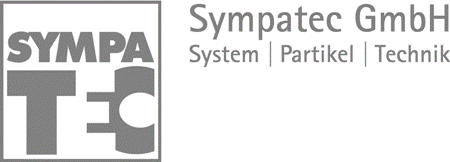The extraction of raw minerals starts with the mining of rich ores, which are then cut up in crushers and grinders. The pieces of rock, which weigh tonnes to start with, are ground down to a few tenths of a millimeter.
This grinding process is carried out in multiple steps, and often covers six decimal orders of magnitude of the particle size. For the coarse grinding process, classic crushers are utilized. The primary and secondary grinding is performed in semi-autogenous (SAG) or autogenous (AG) mills, and in ball or rod mills.
If the raw material is distributed suffienciently fine, the precious mineral will be separated from the burden rock in flotation cells (wet classification). The acquired material substrate is known as concentrate.
.png)
Typical particle size distributions measured at the discharge section of an SAG mill for pre-crushing, and at the mill output of the final ball mill (concentrate). Image Credit: Sympatec GmbH
In this process, the particle size is of particular importance. Unwanted accessory minerals cannot be separated from the ore if the particles are too big and the ore concentrate gathered has a low purity.
Overgrinding however leads to low throughput and high milling costs in addition to an increased requirement for chemicals in flotation. Flotation cells are also sensitive to solid overloading. Therefore, another relevant process parameter is the solid concentration of the ore suspensions fed to the flotation cells.
.png)
The development of particle sizes over a few days: Fine particles <45 microns or <75 microns are inverse to the solid concentration | If the proportion of solids increases (overloading the mill), the fine particles return to the ore slurry, and vice versa.
Monitoring of the ore suspension in real-time is required for compliance with the ideal grain size and the solids load in the transition from the last grinding stage to the flotation cell. This measurement task puts pressure on the technology that is utilized.
So, on the one hand, it is crucial to record representative and relevant sample quantities from the huge streams of the main product. On the other hand, robust and wear-resistant sensors are necessary for the abrasive mineral slurries which flow at a fast pace.
Configurations for Online Particle Size Analysis
Application Strengths
- Good comparability with results from a screening analysis
- Analyses in full volume flow and without sample dilution
- Sturdy design without moving parts
- High statistical reliability thanks to large sample sizes – up to 300 liters per analysis
- Low-wear ultrasonic transducer
- Classical resolution in 31 size classes
- Simultaneous analysis of solid concentration and particle size
- Multiplex-compliant – inspection of several grinding lines
Customer Benefits
- Damage prevention in the flotation cells
- Reduction of energy consumption by avoiding overgrinding and during flotation processes
- Optimum output at a high concentrate grade
- Inspection and management of the mill feed with various feed material compositions
- Optimum flotation with reduced chemical use thanks to consistent suspension quality – improvement of raw material efficiency
Better Particles with Best Instruments
Based on ultrasonic extinction, the OPUS measuring system meets these demands and offers a simultaneous instant analysis of the solid concentration and the particle size distribution.
The acoustic measurement technique enables the ultrasonic measuring probe to be submerged straight into the volume flow and, in this respect, records up to 300 liters of unconditioned and undiluted mineral slurry in minutes.
In practice, a combination of primary samplers and a MULTIPLEXER is commonly applied to observe multiple grinding lines employing just one OPUS sensor.
In a first step, partial streams are diverted from up to four primary product streams and directed to the MULTIPLEXER. The MULIPLEXER manages the incoming flows and direct them one after the other to OPUS in a second step.
This complete automation guarantees sample feeding to the OPUS-sensor, which is consistently integrated into the MULTIPLEXER.
The MULTIPLEXER also offers a decreased product flow in the measurement zone of the OPUS sensor, which, in turn, greatly optimizes the already highly effective service life.

This information has been sourced, reviewed and adapted from materials provided by Sympatec GmbH.
For more information on this source, please visit Sympatec GmbH.